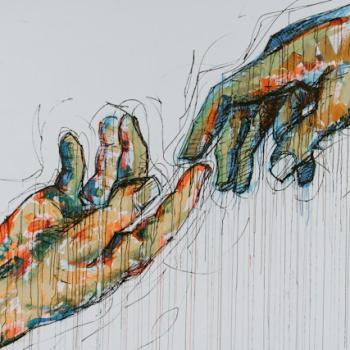
It’s a well-established fact that close to 50% of all marriages end in divorce or separation. Any number of reasons have been attributed to such a high number: changing cultural norms, longer life spans, greater support for victims of domestic violence, the relative ease of no-fault claims, higher average salaries of professional females, and countless others. Many shake their heads and denounce the high percentage. Not me though. I think it’s a miracle that any marriage lasts longer than an NBA basketball season.
The institution itself is over 4,300 years old. Prior to this time, communities were more loosely organized into groups of a few dozen people with male leaders, women shared among them, and the children they bore. But once the hunter-gatherer era gave way to a more agricultural way of life, greater stability was needed. The original purpose of marriage at that time was to tie a man to a woman so that he could be sure of the paternity of his offspring. She became his property, and his land could then be easily inherited by his sons. Romantic, huh?
A Bit of History
It wasn’t until the eighth century that marriage was identified as a sacrament in the Catholic church, and even then, romantic love wasn’t usually part of the equation, unless it was a happy accident that developed over time. But in the Middle Ages, the concept of romantic love became a factor, which expanded the woman’s role in marriage beyond simply providing for the man’s needs.
Once women won the right to vote in the United States in early 20th century, marriage then became a union between two full citizens. While men still had the upper hand, the power gap between marriage partners narrowed. Once interracial marriage was no longer illegal in the 60s and marital rape was acknowledged as a crime in the 70s, that gap narrowed further still. When gay marriage became legal in 2015, the entire conversation around marriage changed.
In the last half century, the institution of marriage has let go of some of its more pragmatic functions and, as historian Stephanie Coontz has written, taken on more of a psychological dimension. Marriage partners now have high expectations regarding how their relationship will influence their own personal growth. In other words, the institution that used to be necessary for clarifying paternity and the transfer of property is now called upon to facilitate each individual partner’s self-actualization.
Like I said, I think it’s a miracle when any marriage makes it.
Bone of My Bone
This week’s readings include the “bone of my bones and flesh of my flesh” passage from Genesis designed to explain “why a man leaves his father and mother and clings to his wife” (2: 23). Then in the gospel reading from Matthew, Jesus quotes this very scripture passage when the Pharisees try to trip him up with questions about the legality of divorce. Both have been used to support the specious claim that the man is truly the head of the house because the woman was created from him. Such temporal concerns as what happened first and second seem silly to me.
But what is useful about the Genesis passage is the description of how the woman was made – by taking a rib from the man. To me, that’s a perfect explanation of marriage.
I’ve been married for 27 years. There have been times when we’ve been completely in sync, happily supportive of each other’s goals, and genuinely pleased with each other’s company. And there are times that we’ve each wondered if “good behavior” could get us out on parole not too awful long after the second-degree murder conviction comes down.
Through it all, each of us continues dig a bone out of the fleshy muck of our lives and hand it over to the other. Every time, it leaves a gaping cavity that sometimes purples over into healthy scar tissue and sometimes becomes a painful abscess. And just as soon as the bleeding stops, damned if another bone doesn’t need to be chopped off and extracted. And again. You then start to do what you swore you never would – keeping score. I gave him two femurs, and all I got was this lousy kneecap. No fair. You’re pissed.
Learning to Dance
Then a crazy thing happens. Just when you think you can’t lose any more bones, you realize that different types of cartilage and muscle and ligament have somehow grown into the places where those bones once were. And what’s more, this new tissue is not only stronger than the bone it replaced, but it’s also more flexible too. Surprisingly, your shoulders are no longer stiff, and your knees no longer creak when you get out of bed. You can walk further distances and lift heavier items than you used to. You are amazed to find that you can dance without the need for NSAIDs or Acetaminophen afterwards.
And so it goes – rib after rib after rib gets cut out and given away until you realize that all you ever really wanted was to dance and now you can. Like I said, it’s a miracle.











